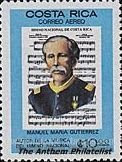"Largest Stamp Mosaic in the World"

Hongkong Post set the New Guinness World Record for the 'Largest Stamp Mosaic'. The Guinness World Record has confirmed that the Stamp Mosaic, measuring 6.45m wide and 3.97m high, with over 69,000 used stamps donated by Hongkong Post staff and 98 overseas postal administrations, created by Hongkong Post on 30 August 2005 is the largest stamp mosaic in the world. This extraordinary and unprecedented result was achieved through the dedication and teamwork of all participating staff and their families . This successful attempt has gained another World Record entry for Hong Kong and the avant-garde initiative demonstrates not only the team spirit and creativity of Hongkong Post, but also the solidarity among postal administrations. In celebration of the 10th Anniversary of the Post Office Trading Fund, for the first time in Hong Kong, over 1,480 Hongkong Post staff and their families participated in affixing the sta mps and created this gigantic stamp mosaic during their spare t...




















